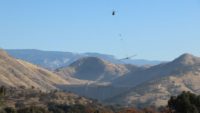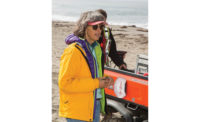
In California, a retired electrical engineer has revived an out-of-production sonar device that uses very low frequency, or VLF, radio waves to locate underground water, and, as recently as Feb. 15, he has been successful. Using improved software, he found water where others had failed.
Richard Varian, owner of Survey4Water, Willits, Calif., uses the WADI VLF-sonar device—developed over 25 years ago by ABEM, Sundbyberg, Sweden—to find water trapped in rock fractures and cavities.
"The fractures in the rock are where the water accumulates," says Varian.
WADI reads 10-kHz to 30- kHz radio waves from VLF transmitters operating to support communication systems across the globe, says Mats Thörnelöf, an ABEM representative.
"It is the band that the [armed forces] use for communication with submerged submarines," says Thörnelöf. ABEM discovered that these frequencies could be used for geophysical applications as well, he says.
WADI's original DOS-based software exported data to a computer, but it was difficult to read, says Varian. When ABEM released a newer version, the readout improved, although Varian says interpretation still is difficult and takes practice.
Soon after the new software was released, the WADI went out of production "due to lack of critical components," says Thörnelöf. "We are still looking to see if they can be found," he adds, declining to provide specifics.
Any conductive structure affects the direction and strength of the VLF radio signal. When surveying, Varian looks for a spike in his readings, displayed when the WADI reacts to high electrical conductivity of fracture zones in underground rock.
Fine-Tuned Device
Thörnelöf says the machine's strength is also a weakness because it reacts to anything with high electrical conductivity, including power lines or buried metal pipes.




Post a comment to this article
Report Abusive Comment